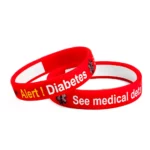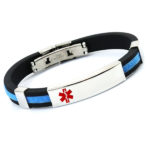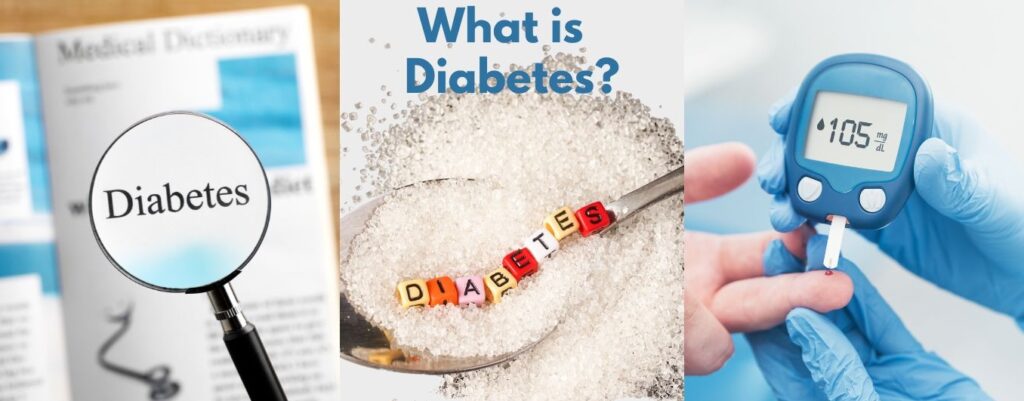Diabetes Blog
What is Diabetes?
What is Diabetes and what are the symptoms?
Diabetes mellitus commonly known as Diabetes is a metabolic disease where the body doesn’t produce or properly use insulin. Your body isn’t able to move sugar, or glucose, from your bloodstream into your cells, so you end up with a surplus in your bloodstream.
How many types of Diabetes mellitus are there?
There are four types of diabetes;
- Type 1 occurs when the part of the body which produces insulin, called the pancreas, doesn’t produce enough insulin.
- Type 2 occurs when the cells in your body become “insulin resistant” and stop responding to insulin.
- Prediabetes – the body can still move glucose out of the bloodstream but not as quickly as it should, can progress to type 2 diabetes.
- Gestational Diabetes occurs when your body can’t make enough insulin during your pregnancy.
This causes difficulty in controlling the levels of sugars in your blood.

Type 1 Diabetes
Type 1 diabetes commonly known as Insulin dependent diabetes mellitus is an autoimmune disease, it is not caused by eating too many sweet things. As Type 1 diabetics don’t produce their own insulin, they must take injections of insulin multiple times a day. It usually occurs during childhood or adolescence (and was previously referred to as juvenile diabetes) but it can also develop in adults, even some people in their 60s! In fact, half of all people who are diagnosed with Type 1 diabetes are adults.
This can be difficult if you are travelling in a hot climate as insulin must be kept between 18 and 26˚C. FRIO insulin cooler wallets are available from our shop here. These keep insulin at the recommended temperature for a minimum of 45 hours even in external temperatures of up to 37.5˚C.
Type 2 Diabetes
Type 2 diabetes is the most common form of diabetes. It occurs when the cells in the body become less sensitive to insulin. At first your body tries to compensate by producing more insulin but eventually it cannot produce enough to keep your blood sugar levels steady. Because the cells are not responding to the insulin, they cannot access the glucose in your bloodstream.
Many people with type 2 diabetes often have prediabetes before meeting the criteria for type 2 diabetes. The progression to type 2 diabetes may be preventable as it is linked to obesity and a sedentary lifestyle. Type 2 diabetes can sometimes be managed without medications by exercise, controlling your diet and weight loss (if you are overweight). In other cases, medications are needed to effectively manage the diabetes. There is also an increased risk of developing type 2 diabetes if you have family members who have been diagnosed.
Gestational Diabetes
Gestational Diabetes occurs when your body can’t make enough insulin during pregnancy resulting in high blood sugar levels. It is important to keep these levels controlled to prevent complications. The symptoms usually disappear after birth but women who have gestational diabetes have a greater risk of developing type 2 diabetes later in life.
Hypoglycaemia and Hyperglycaemia
Diabetic Hyperglycaemia – What are the symptoms of high blood sugar in diabetics
Diabetic Hyperglycaemic occurs when someone with diabetes has too much sugar (glucose) in his or her blood. Without insulin, your blood sugar levels rise to high levels, this is called hyperglycaemia. Hyperglycaemia causes your body to try to get rid of the sugar through urination, which in turn makes you feel very thirsty to make up for the fluids you’re losing. Since insulin is needed to break down the sugar into usable energy, your body may begin to break down muscle and body fats in order to provide energy. If your body isn’t receiving enough energy, you will begin to feel tired.
High blood sugar levels can be caused by not taking your medications, not exercising enough or eating too much. Keeping your blood sugar levels in a normal, healthy range is very important. That’s why it’s important to take your medication as it’s prescribed by your doctor, exercise regularly, and follow meal plans and try not to overdo it on special occasions! If you rarely get high blood sugar levels then there’s no need to worry but if you regularly have them then it’s time to talk to your doctor.
Early symptoms of hyperglycaemia include:
- Increased thirst;
- Frequent urination;
- Headaches;
- Trouble concentrating;
- Blurred vision;
- Tiredness;
- Weight loss.
If your high blood sugar continues to stay high you can experience these symptoms:
- Skin infections;
- Vision deterioration;
- Slow healing of wounds;
- and more.
Diabetic Hypoglycaemia
Diabetic hypoglycaemia occurs when someone with diabetes doesn’t have enough sugar (glucose) in his or her blood. Low blood sugar can be caused by the medication used to treat diabetes. These medications, like insulin, work by breaking down the sugars into energy. This causes your blood sugar levels to go down. This can be a tricky balancing act as exercising can also reduce your blood sugar levels and if you have missed a meal or haven’t eaten sufficient carbohydrate in your last meal, your levels may already be low. Sometimes this can mean that the levels go down too low which is called hypoglycaemia. If you are hypoglycaemic you can:
- feel hungry and shaky;
- your heart rate can increase;
- feel sweaty and clammy;
- become pale or even grey-toned;
- have a headache and blurred vision;
- be bad tempered;
- feel weak and tired;
- feel like you are walking unsteadily;
- feel confused.
Hypoglycaemia can also cause seizures and unconsciousness. This is why it’s important to recognise the early symptoms to prevent more serious symptoms from occurring. It’s also very important to check your blood sugar levels regularly. If your blood sugar levels do drop too low then it is important to eat or drink something sugary like glucose sweets, fizzy drinks or juice. An injection of glucagon may be necessary in cases where the person with hypoglycaemia has passed out.
Medical Alert
In emergencies where the diabetic person is confused or even unconscious, it can be very difficult for bystanders and medical personnel to know what is going on. This is why it is recommended for diabetics to always wear medical alert bracelets or necklaces visibly. These make sure that the problem is immediately recognised and can be treated straight away.

These should have diabetes written in big lettering and can also have further details printed on such as an emergency contact number, your doctor’s name and phone number, can tell the reader where to find more information such as an emergency medical information card in your wallet or purse or where to find your insulin injection.

The more obvious the ID, the more likely it is that it will be recognised as an ID. There are a range of products available in our shop that will suit everyone, they can be found here and here.
Monitoring and controlling your diabetes is essential. The target range for your blood sugar is usually 4-7mmol/L or up to 8mmol/L after a meal, your health care worker can tell you your exact range. It can be very difficult to keep it within this ranges and it is common for people who are trying very hard to keep the levels normal to experience hypoglycaemia more often than people who are not as strict.
Hyperglycaemia is also dangerous. High levels over long periods of time can damage blood vessels. This causes increased risk of heart disease, stroke, kidney disease, nerve damage and eye damage. These problems usually show up after a number of years of badly managed diabetes.
Disclaimer: The information provided is for informational purposes only and is not intended to be a substitute for professional medical advice, diagnosis or treatment. Allergy Lifestyle Limited (t/a) Allergy Lifestyle) uses reasonable endeavours to check the accuracy of information provided however no warranty is given that they are error-free.


